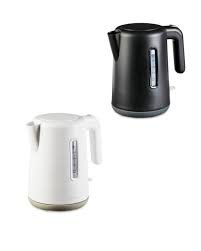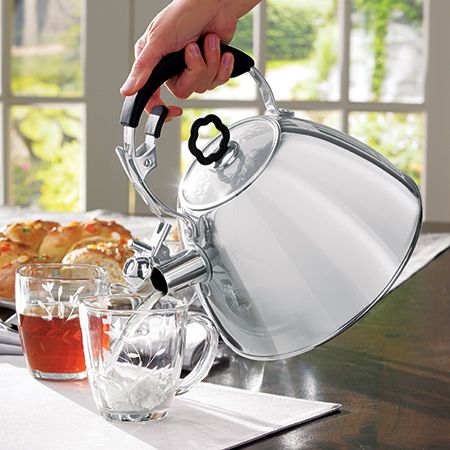Introduction:
Hello, fellow outdoor enthusiasts! Have you ever experienced the joy of cooking under the open sky, surrounded by the soothing sounds of nature and the warmth of a crackling campfire? If not, you’re in for a treat because today, we’re diving into the world of cast iron kettle camping—a delightful blend of tradition, taste, and togetherness. Picture this: you and your friends, gathered around a campfire, sharing stories and laughter while the aroma of hearty stews wafts through the air. Cast iron kettles have been a camper’s best friend for generations, and in this guide, we’re going to unravel the secrets of this timeless outdoor cooking companion. So, grab a cup of your favorite beverage, sit back, and let’s embark on a rustic culinary adventure together.
Benefits of Using Cast Iron Kettles in Camping:
When it comes to camping cookware, cast iron kettles stand out as sturdy, reliable, and versatile companions. Let’s explore why these humble kettles have earned their place in the hearts of campers worldwide.
Durability Beyond Measure:
Cast iron kettles are renowned for their durability. These robust pots can withstand the rigors of open-flame cooking and are virtually indestructible. Unlike their modern counterparts, they don’t dent, scratch, or lose their shape, making them a long-lasting investment for any camping enthusiast.
Even Heat Distribution:
One of the key advantages of cast iron kettles is their exceptional heat retention and distribution. The thick walls of these kettles ensure even heating, eliminating hot spots that are common in other cookware. This feature is a game-changer, allowing you to cook your meals uniformly and perfectly, whether you’re simmering a stew or baking cornbread over the campfire.
Versatility in Cooking:
Cast iron kettles are incredibly versatile. From soups and stews to casseroles and desserts, these kettles can handle a wide array of dishes. Whether you’re boiling water for your morning coffee or preparing a gourmet campfire feast, a cast iron kettle can do it all. Its versatility opens up a world of culinary possibilities, making every camping meal a delightful adventure.
Easy Maintenance and Cleaning:
Contrary to popular belief, maintaining a cast iron kettle is a breeze. With a little care and attention, these kettles can last a lifetime. The process of seasoning, which involves applying a thin layer of oil and heating the kettle to create a natural non-stick surface, not only enhances the kettle’s performance but also protects it from rust. Cleaning is simple – a gentle scrub with a brush and hot water is usually sufficient. Plus, the more you use a cast iron kettle, the better it gets, as it develops a seasoned patina that adds flavor and character to your dishes.
How to Choose the Right Cast Iron Kettle for Camping:
Selecting the perfect cast iron kettle for your camping adventures might seem daunting given the variety available in the market. Fear not! With a few considerations in mind, you can find the kettle that suits your needs like a glove.
Size Matters:
The first and foremost consideration is the size of the kettle. Think about the number of people you’ll be cooking for on your camping trips. If you often camp with a large group, a bigger kettle would be ideal. However, if you’re a solo adventurer or part of a small group, a smaller kettle might suffice. It’s essential to strike a balance between size and portability, ensuring that the kettle fits comfortably in your camping gear without overwhelming your backpack.
Types of Cast Iron Kettles:
Cast iron kettles come in various shapes and sizes, each designed for specific purposes. Traditional camp kettles are deep and wide, perfect for cooking stews, soups, and chili. Dutch ovens, on the other hand, feature a tight-fitting lid and are excellent for baking, roasting, and simmering. Consider the type of camping meals you love to prepare and choose a kettle that aligns with your culinary preferences.
Material Quality:
Not all cast iron kettles are created equal. Pay attention to the quality of the materials used in the kettle’s construction. Opt for kettles made from high-quality cast iron, preferably with a smooth finish. Avoid kettles with rough or pitted surfaces, as these can affect the cooking process and make cleaning more challenging.
Handles and Accessories:
Comfortable handles are a game-changer when it comes to maneuvering a hot kettle over a campfire. Look for kettles with sturdy, heat-resistant handles that provide a secure grip. Some cast iron kettles also come with additional accessories like lids lifters and tripods, enhancing your cooking experience. Evaluate these extras based on your specific needs and preferences.
Proper Care and Maintenance of Cast Iron Kettles:
Caring for your cast iron kettle is crucial to ensure its longevity and optimal performance. Let’s explore the step-by-step process of seasoning, cleaning, and storing your kettle to keep it in pristine condition for years to come.
Seasoning Your Cast Iron Kettle:
Seasoning is the cornerstone of cast iron care. It involves applying a thin layer of oil to the kettle and heating it to create a protective coating. This coating not only prevents rust but also provides a natural non-stick surface, making cooking and cleaning a breeze. To season your kettle, start by washing it with hot, soapy water to remove any manufacturing residue. Dry it thoroughly with a clean towel or by placing it over low heat on a stovetop. Once completely dry, apply a thin layer of vegetable oil or shortening inside and outside the kettle. Wipe off any excess oil with a paper towel. Place the kettle upside down in an oven preheated to 350°F (175°C) and bake it for an hour. Repeat this process a few times, and your kettle will develop a beautiful, glossy patina.
Cleaning Your Cast Iron Kettle:
Contrary to popular belief, soap can be used to clean cast iron kettles. However, it’s essential to use mild soap and avoid harsh detergents that can strip away the seasoning. After cooking, allow the kettle to cool slightly before cleaning. Use warm water, a soft brush, and a small amount of mild soap to scrub off any food residue. Avoid using metal scrubbers or abrasive pads, as these can damage the seasoning. Once cleaned, rinse the kettle thoroughly with hot water and dry it immediately with a clean cloth. Never let a cast iron kettle air dry, as this can lead to rust formation.
Storing Your Cast Iron Kettle:
Proper storage is essential to prevent your cast iron kettle from rusting. After cleaning and drying, apply a thin layer of oil to the inside and outside of the kettle to create a protective barrier. Store the kettle in a dry, cool place away from direct sunlight. If possible, place a paper towel or cloth inside the kettle to absorb any moisture that might accumulate. Avoid storing the kettle with the lid on, as this can trap moisture and lead to rust formation. Regularly inspect your kettle for any signs of rust, and if necessary, re-season it to maintain its integrity.
Delicious Camping Recipes Using Cast Iron Kettles:
Now that you have a seasoned (pun intended) understanding of cast iron kettle care, it’s time to delve into the exciting realm of camping recipes. Cast iron kettles, with their even heat distribution and versatility, are perfect for preparing a wide array of mouthwatering dishes in the great outdoors. Here are a few recipes to tantalize your taste buds and inspire your next camping culinary adventure.
Campfire Stew:
There’s something incredibly comforting about a warm, hearty stew simmering away in a cast iron kettle over a campfire. To make a classic campfire stew, start by heating some oil in your kettle. Add diced onions, garlic, carrots, and potatoes, and sauté until they’re slightly browned. Next, add chunks of your favorite meat (beef, chicken, or lamb), and let them brown. Pour in beef or vegetable broth, add seasoning (salt, pepper, and your favorite herbs), and let the stew simmer until the meat is tender and the flavors are beautifully melded. Serve hot with a side of crusty bread and enjoy the taste of camping bliss.
Dutch Oven Pizza:
Yes, you read that right—pizza in the great outdoors! Making pizza in a cast iron kettle is a fun and delicious experience. Start by prepping your favorite pizza dough and pizza sauce at home. On a well-floured surface, roll out the dough to fit the bottom of your kettle. Grease the kettle lightly and carefully transfer the rolled-out dough. Spread a generous layer of pizza sauce, add your favorite toppings (cheese, pepperoni, veggies, you name it!), and cover the kettle with its lid. Place the kettle over the campfire and let the magic happen. In about 20-30 minutes, you’ll have a piping hot, cheesy pizza ready to be devoured by your camping companions.
Campfire Peach Cobbler:
Desserts are a must during camping trips, and a cast iron kettle can work wonders when it comes to baking delectable treats. For a scrumptious campfire peach cobbler, start by melting some butter in the kettle over the campfire. In a separate bowl, mix peaches (fresh or canned) with sugar, cinnamon, and a squeeze of lemon juice. In another bowl, combine flour, sugar, baking powder, and a pinch of salt. Gradually add milk to create a thick batter. Pour the batter over the melted butter in the kettle, but resist the urge to stir. Spoon the peach mixture on top of the batter without mixing. Cover the kettle and let the cobbler bake over the campfire until the crust is golden brown and the peaches are bubbling. Serve the warm cobbler with a dollop of whipped cream or a scoop of vanilla ice cream for the perfect camping dessert experience.
Tips for Cooking Safely with Cast Iron Kettles:
Cooking with cast iron kettles over a campfire can be incredibly rewarding, but it also requires some safety precautions to ensure a seamless and enjoyable experience. Let’s explore some essential tips for cooking safely with cast iron kettles in the great outdoors.
Choose a Stable Cooking Surface:
Before placing your cast iron kettle over the campfire, ensure that you have a stable and level cooking surface. Uneven ground can cause the kettle to tip over, posing a risk of spills and burns. If needed, create a flat area by clearing away rocks and debris, ensuring a secure foundation for your kettle.
Establish a Safe Cooking Zone:
Maintain a safe distance between the campfire and your cooking area. Use rocks or designated fire rings to create a boundary around the fire, preventing accidental contact with the flames. Additionally, be mindful of overhanging branches or other flammable materials that could catch fire when exposed to heat.
Use Long-Handled Utensils:
When cooking with a cast iron kettle over a campfire, invest in long-handled utensils like spatulas and ladles. These tools allow you to stir, lift, and serve food from a safe distance, minimizing the risk of burns. Avoid using short-handled utensils that require you to lean too close to the flames.
Monitor the Fire:
Keep a close eye on the campfire while cooking. Flames can fluctuate in intensity, and wind conditions might affect the fire’s behavior. Adjust the kettle’s position and height above the flames accordingly to prevent overheating or sudden flare-ups. Always have a bucket of water or a fire extinguisher nearby for emergencies.
Handle Hot Kettles with Care:
Cast iron kettles can become extremely hot, especially when placed directly over the campfire. Use heat-resistant gloves or oven mitts when handling the kettle or its lid. Exercise caution and avoid accidental contact with any part of the kettle to prevent burns.
Conclusion:
And there you have it, fellow campers—the wonderful world of cast iron kettle camping unveiled! From the benefits of using these durable and versatile kettles to selecting the perfect one for your adventures, from essential care and maintenance tips to delightful camping recipes, and from cooking safely to savoring the joys of outdoor dining, we’ve covered it all.
Cooking with a cast iron kettle isn’t just about preparing meals; it’s a journey back to simpler times, a connection with nature, and a celebration of camaraderie. So, the next time you embark on a camping trip, don’t forget to pack your trusty cast iron kettle and let the outdoor culinary adventures begin.
Happy camping and happy cooking!
FAQ Section:
Q1: Can I use soap to clean my cast iron kettle?
A1: Yes, you can use mild soap to clean your cast iron kettle. Contrary to popular belief, using a small amount of mild soap won’t harm the seasoned surface. However, avoid harsh detergents that can strip away the seasoning. After cleaning, be sure to thoroughly rinse the kettle with hot water and dry it immediately to prevent rusting.
Q2: Can I use my cast iron kettle on a gas stove or electric cooktop?
A2: Yes, cast iron kettles are versatile and can be used on gas stoves, electric cooktops, and even in ovens. They are designed to handle various heat sources, making them a convenient choice for indoor and outdoor cooking.
Q3: How often should I season my cast iron kettle?
A3: The frequency of seasoning your cast iron kettle depends on how often you use it and how well it’s maintained. Generally, it’s a good practice to season your kettle after every few uses or whenever you notice the seasoning starting to wear off. Regular seasoning helps maintain the non-stick surface and prevents rusting.
Q4: Can I cook acidic foods, like tomatoes, in a cast iron kettle?
A4: While cast iron is durable, it can react with acidic foods, potentially imparting a metallic taste to the dish. It’s best to avoid prolonged cooking of highly acidic foods in a cast iron kettle. If you need to cook acidic dishes occasionally, ensure that your kettle is well-seasoned to minimize any reactions.




